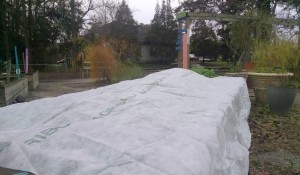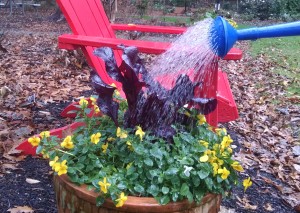Brrr! Protecting Plants From the Cold
go.ncsu.edu/readext?438334
en Español / em Português
El inglés es el idioma de control de esta página. En la medida en que haya algún conflicto entre la traducción al inglés y la traducción, el inglés prevalece.
Al hacer clic en el enlace de traducción se activa un servicio de traducción gratuito para convertir la página al español. Al igual que con cualquier traducción por Internet, la conversión no es sensible al contexto y puede que no traduzca el texto en su significado original. NC State Extension no garantiza la exactitud del texto traducido. Por favor, tenga en cuenta que algunas aplicaciones y/o servicios pueden no funcionar como se espera cuando se traducen.
Português
Inglês é o idioma de controle desta página. Na medida que haja algum conflito entre o texto original em Inglês e a tradução, o Inglês prevalece.
Ao clicar no link de tradução, um serviço gratuito de tradução será ativado para converter a página para o Português. Como em qualquer tradução pela internet, a conversão não é sensivel ao contexto e pode não ocorrer a tradução para o significado orginal. O serviço de Extensão da Carolina do Norte (NC State Extension) não garante a exatidão do texto traduzido. Por favor, observe que algumas funções ou serviços podem não funcionar como esperado após a tradução.
English
English is the controlling language of this page. To the extent there is any conflict between the English text and the translation, English controls.
Clicking on the translation link activates a free translation service to convert the page to Spanish. As with any Internet translation, the conversion is not context-sensitive and may not translate the text to its original meaning. NC State Extension does not guarantee the accuracy of the translated text. Please note that some applications and/or services may not function as expected when translated.
Collapse ▲Temperatures in the teens aren’t all that common (thank goodness) in southeastern North Carolina. But, when we do get a cold blast, gardeners always ask about how to protect plants from low temperatures.
No matter what you do there will be some injury on certain plants. Unless it’s a very mild winter oleanders and sago palms suffer. Open camellia blossoms can’t take the freeze. Exposed pittosporums – especially the dwarf and variegated selections – are often affected.
So, what are our options for protecting plants against the cold?
Polyester row cover material or even an old sheet will prevent ice formation on the leaves and buds but may not be enough to protect sensitive plants when temperatures plunge into the high teens. Clear plastic in sometimes recommended but make sure you support it with something to keep it from lying directly on the leaves. And, if the day warms up, remove the plastic. The greenhouse effect will get you.
One thing that gets passed around every year is that you can protect your plants by spraying water on them. Like most things there’s a bit of truth to it, but anyone who believes that they can go out before they turn in for the evening and spray their plants with the garden hose and expect protection will be disappointed.
As water freezes it gives up heat. This is what protects the plants – not the ice. Ice has no insulating value. For water to work it must be applied continually throughout the entire below-freezing event so that heat is continually given up as the ice forms. This is not practical for most people. And, the weight of the ice can break limbs. That’s why you don’t see this method used in tree fruits. It’s mostly strawberries and blueberries.
Speaking of water, make sure that plants don’t go into these cold blasts on the dry side. That shouldn’t be a problem if there has been recent rainfall for plants growing in soil, but check containers because the pine-bark based media will dry more quickly. One of the biggest culprits in “winter kill” is lack of water. Once the soil freezes on top, water isn’t available to the roots. Low humidity and cold northerly winds cause plants to lose lots of moisture from the leaves – aggravating the problem
Some people really don’t like the look of the fried leaves. If you can live with it wait until late February to remove the damaged tissue.
While there’s not much you can do in that situation, avoid early pruning and nitrogen fertilization so plants don’t leave their dormant period sooner than normal. This is especially true for plants such as centipede grass that lose their dormancy very quickly—just three to four warm days.





